75 Years Later, the Deadly Bombing That Rocked the New York World’s Fair Is Still Unsolved
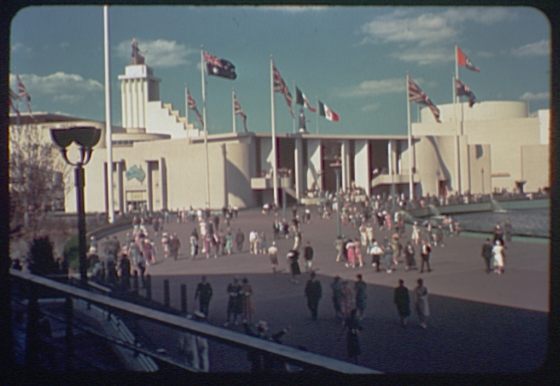
The Hall of Nations area towards the British Pavilion at the 1939 World’s Fair in New York. (Photo: Library of Congress)
The World’s Fair of 1939-1940 was conceived as a way to pull New York out of the doldrums of the Great Depression. The fair’s theme was “Dawn of a New Day,” and in order to create this gleaming vision of the future, the vast ash dumps of Corona, Queens were transformed into a glittering playground with expansive displays from 60 countries, all trying to out-do one another.
The USSR built a life-sized replica of a Moscow metro station. In the British Pavilion, visitors could marvel at the Magna Carta and the Crown Jewels, while in the French Pavilion, the celebrated Le Pavilion restaurant proved so popular it would move to Manhattan after the fair.
The fair’s hometown was not so lucky. New York City Parks Commissioner Robert Moses and Chief of Police Grover Whalen, who together spearheaded the site’s evolution from a place the New York Times described as having “dog-sized rats” that skittered through ash mounds that “towered as high as 90 feet” to a suitable place for President Roosevelt to visit, picked the perfectly wrong time for such a spectacle. In 1939, the world was teetering on the precipice of war. The buttons handed out by General Motors, which read “I Have Seen The Future,” suddenly took on an ominous meaning.
The first season of the World’s Fair ran from April to October 1939; in the fall, Adolf Hitler set into motion the events that would start the Second World War. Poland, invaded on the first day of September, draped their pavilion in large black cloths, and Czechoslovakia didn’t open theirs at all.
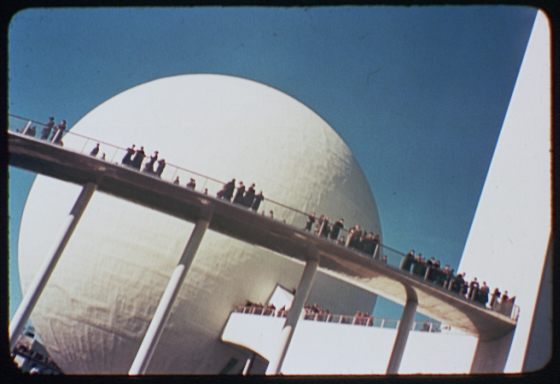
An oblique view of the Helicline, the curved walkway that led to the Perisphere. (Photo: Library of Congress)
President Roosevelt dedicated the Fair, and it was broadcast by the medium of the future, the television. Visitors marveled at wondrous new inventions like the fax machine, air conditioning and an eight-foot tall robot that could walk, talk and even smoke. Futuristic architecture lined wide pastel-colored avenues. The fair was promoted as the eighth wonder of the world, a world dominated by U.S. industry and enterprise.
The newest Ford cars endlessly circled the Avenue of Tomorrow. The Westinghouse Corporation planted a time capsule to be opened in 5,000 years that included artifacts that ranged from Albert Einstein’s writing to a pack of Camel cigarettes. Salvador Dali’s “Dream of Venus” installation featured barely clad women dressed as pianos and mermaids in a surreal dream world. Many of the rides, including the parachute drop, would eventually end their days at Coney Island’s amusement park.
During his opening speech, FDR declared that “we Americans offer up a silent prayer that on the Continent of Europe, from which the American hemisphere was principally colonized, the years to come will break down many barriers to intercourse between nations—barriers which may be historic, but which....have led to strife and have hindered friendship and normal intercourse.” The sentiment was in line with the views of most American citizens, who favored staying out of the “mess” in Europe.
But Germany was not the only country trafficking in dangerous rhetoric at the time. New York was also home to a large number of Nazi sympathizers. The pro-fascist German American Bund had been set up in 1936 to promote Nazi Germany in the U.S., with members drawn from the country’s German immigrant population. Founder Fritz Julius Kuhn soon assembled a sizable faction of supporters.
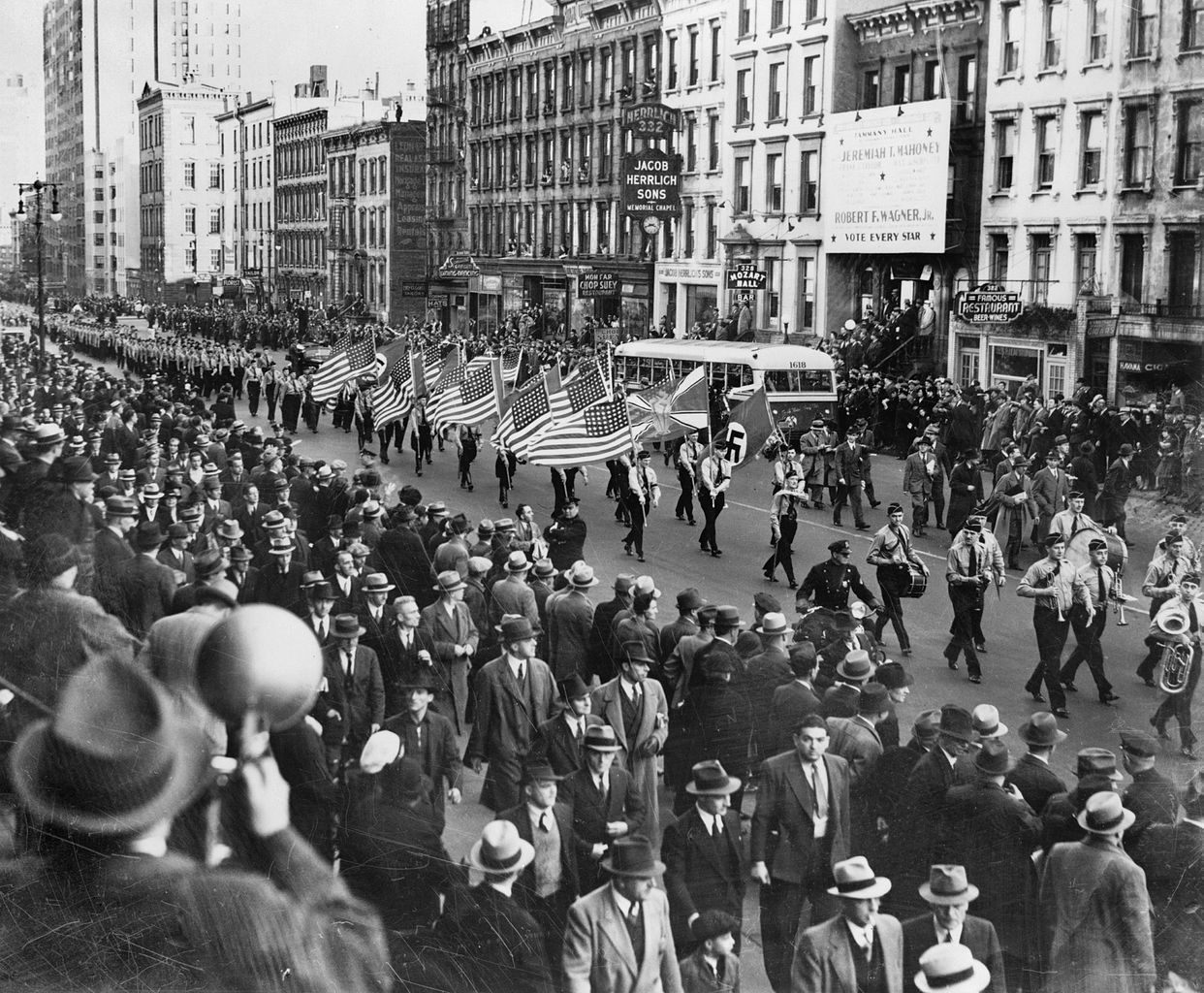
German American Bund parade in New York City on East 86th St, October 1939. (Photo: Library of Congress)
Pro-Nazi marches complete with swastika banners took place on the Upper East Side and down Fifth Avenue. On February 20, 1939, 20,000 Nazi sympathizers chanting “Heil Hitler” attended a rally at Madison Square Garden, the stage decorated with twin banners of Hitler and George Washington. During the summer, Penn Station ran trains, the so-called “Camp Siegfried Specials,” to Yaphank, Long Island, where Bund-organized training camps taught shooting, camping, survivalist, and eugenics classes, and promised German-American patriots that “you will meet people who think like you do.” The rallies and camps drew increasingly hostile protests from anti-German groups.
As tensions rose in the city, so too did the violence. On June 20th, 1940, a bomb ripped apart the offices of the Communist Daily Worker at 35 East 12th Street. That same day, a time bomb exploded at 17 Battery Place, home of the German consulate. On June 21st, a call was placed to Manhattan police headquarters saying that the Bund was going to blow up the Brooklyn Bridge.
On Independence Day, over in Flushing Meadows Park, the glittering science fiction landscape drawing thousands of visitors a day was suddenly torn apart when a bomb went off at the World’s Fair.

Trylon & Perisphere at the World’s Fair. (Photo: Library of Congress)
Detective Joseph Lynch was a college graduate and trained pharmacist from the Bronx. Originally a teacher at Fordham University, with plans to open his own apothecary, the Great Depression led him to seek a more stable way to support his wife and five children. He decided to join the New York City Police Department, where his high level of education quickly propelled him to the elite ranks of the Bomb and Forgery Squad.
On July 4th, 1940, Lynch was on call, but enjoying the holiday at home. About an hour before he was due to finish his shift, a call came in that a suspicious package had been reported at the World’s Fair. Taking his sister’s car, he raced to the Polish neighborhood of Greenpoint, Brooklyn to pick up his partner, Ferdinand Socha.
Socha was also college educated, and had studied medicine. Like Lynch, he was accelerated to the bomb squad. He was off-duty that day, but volunteered to accompany his partner to Flushing Meadows Park to investigate.
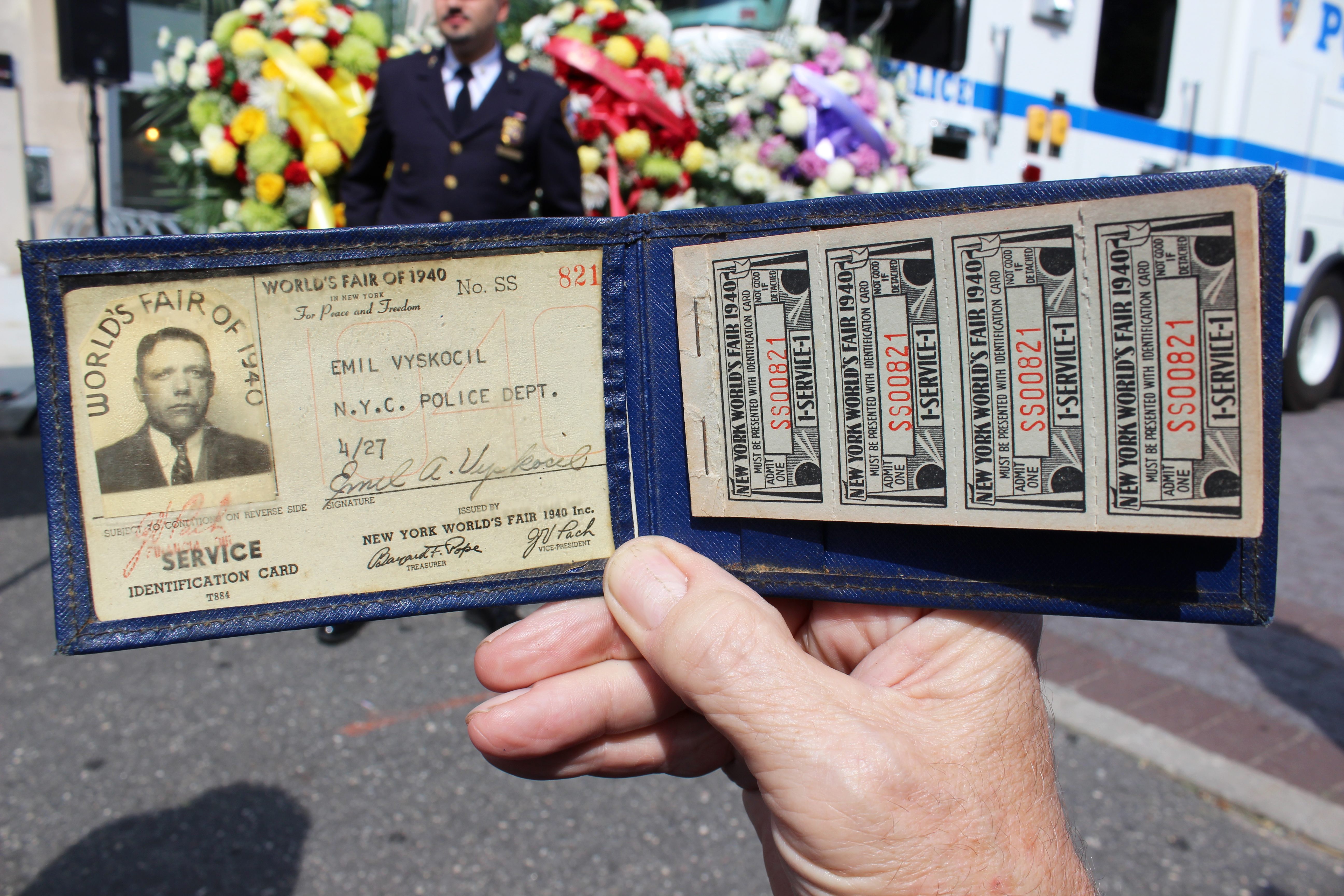
Patrolman Emil Vyskocil’s ID pass for the World’s Fair. (Photo: Luke Spencer)
At the popular British Pavilion, the telephone switchboard operator had received an anonymous call saying that there was a bomb planted in the exhibit. The caller claimed the place was going to blow up and she should “get out.”
A suspicious satchel had been discovered by an electrician in the ventilation room in an upper level of the packed British Pavilion. Patrol officers gingerly removed the case to a more remote area behind the Polish Pavilion, where it would wait for the Bomb Squad. Arriving on the scene, Socha and Lynch could hear the case still ticking.
Back then, the bomb squad had little in the way of protective clothing and safety equipment. As NYPD detectives, Socha and Lynch were dressed in regular suits. All they had going in was their experience, bravery, and simple tools.
Using a pocketknife, Socha cut a small hole in the case. Lynch looked through tentatively. “It’s the business,” Lynch said to his partner. Those were the last words he ever spoke.
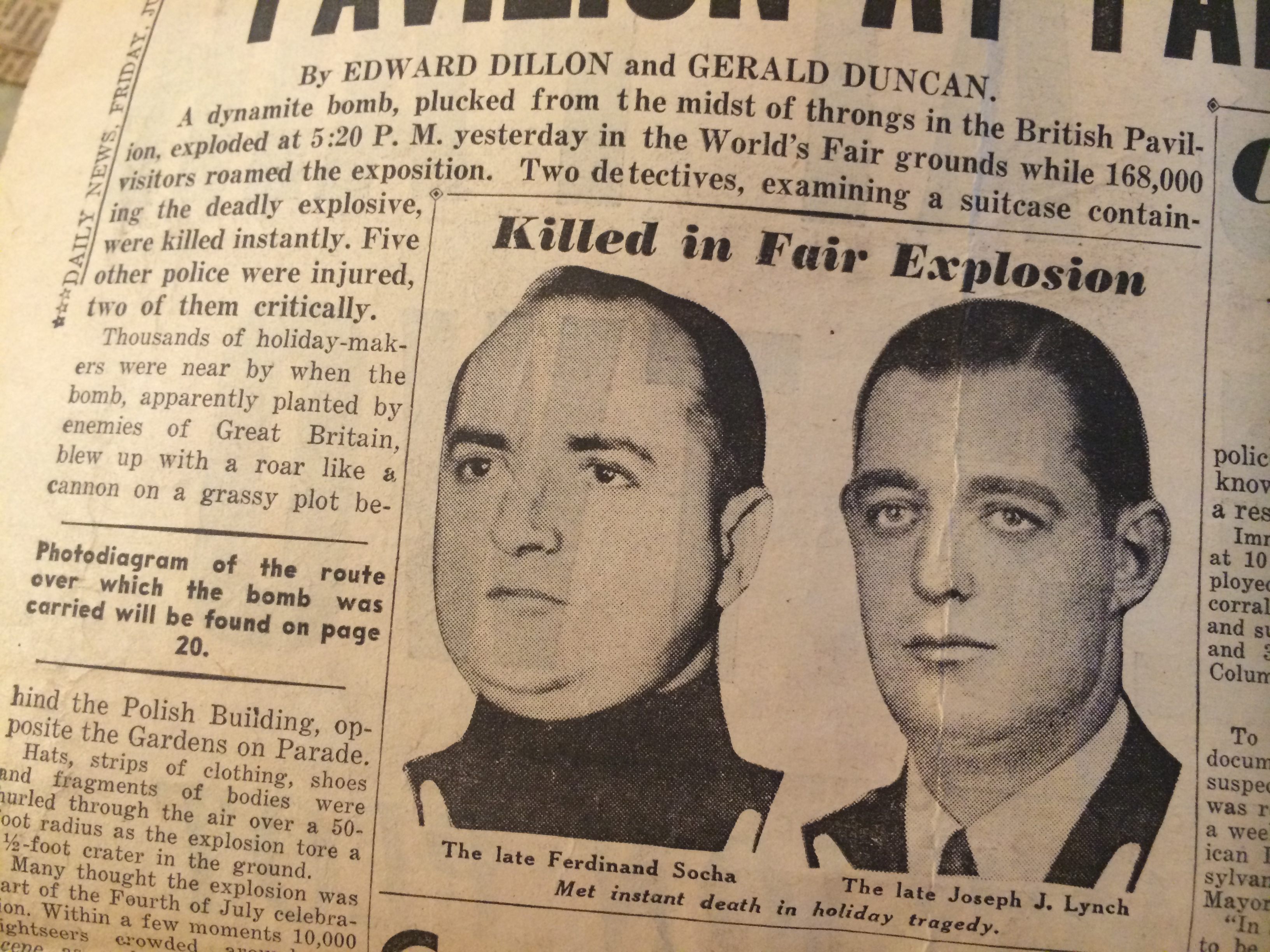
Detectives Ferdinand Socha and Joseph J. Lynch, as shown in a news story about the bombing. Photo: Luke Spencer)
The bomb was later estimated to be the equivalent of around 12 sticks of dynamite. The blast carved a hole in the ground five feet wide and three feet deep, immediately killing Detectives Lynch and Socha. Patrolman Emil Vyskocil had been hurrying bystanders away when the bomb exploded. He suffered terrible injuries from shrapnel fragments to his back and legs. Detectives William Federer, Martin Schuchman, and Joseph Gallagher were also badly injured in the blast.
The Police Department quickly began an investigation into the tragedy. Naturally, it was a high priority case. But three-quarters of a century later, the NYPD is still looking for answers.
My NYPD contact is Bernard Whalen, who has served in the police force since 1981. Together with his father, a former New York state corrections officer, Jon Whalen, he wrote a book outlining the history of The NYPD’s First 50 Years. For Bernard, who has done extensive research into the World’s Fair bombing, the bravery of those officers remains so meaningful that the book is dedicated “in recognition of the heroism the displayed on that fateful afternoon in the finest tradition of the NYPD.”
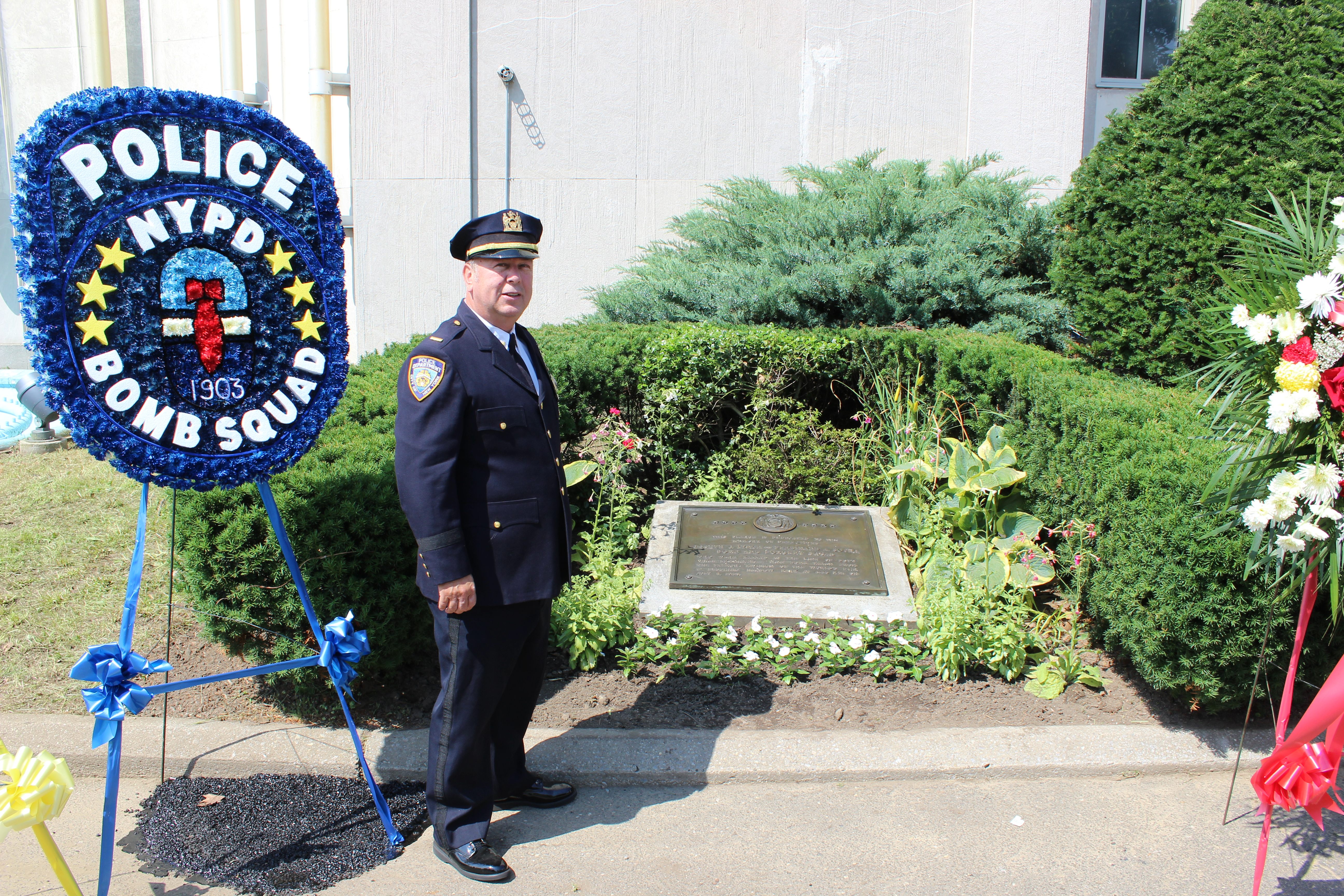
Bernard Whalen, long time veteran of the NYPD and author, by the memorial 75 years after the bombing. (Photo: Luke Spencer)
Walking around the Chinatown neighborhood that for many years was his precinct, Whalen explained that he “felt they were kind of forgotten in history. People don’t remember what was in reality a very serious incident.” Compared to the terrorist attacks of 9/11, the bombing of the World’s Fair is hardly known or taught.
According to Whalen, the NYPD began rounding up leading Nazi sympathizers shortly after the bombing. Members of the Communist Party, the Irish Republican Army and the extremist Christian Front were also questioned. As it had been the British Pavilion that was targeted, primary suspicion fell upon the German American Bund.
One of the first arrests took place the very next day, July 5, 1940, with a raid at the Bund offices on West 181st Street. Former member Caesar Kroger was seized along with several Lugers and rolled-up maps of the U.S. with prominent locations marked on them.
Grimly bent on avenging their comrades, policemen combed the city for the person or persons whose time bomb killed the detectives. But no evidence could tie the German American Bund to the bombing, and as the investigation floundered, an unprecedented reward was offered, with $1,000 coming from the police union and $25,000 from the city, a figure Whalen explains is “roughly around $500,000 today.”

Joseph J. Lynch’s medal for valor. (Courtesy of Easter Miles)
While responsibility for the bombing focused on Britain’s enemies, Whalen says that an alternate theory isn’t out of the realm of possibility, that the bomb was planted by the British themselves as an inside job. Left virtually isolated against Germany, Churchill was desperate for American aid. Meanwhile, American involvement in Europe was the last thing Hitler wanted, so why carry out an act of terrorism that would only help propel the U.S. into the war?
The ventilation room where the bomb was placed was not open to the public, and Whalen says its existence would only have been known to people with inside knowledge of the British Pavilion. British security staff guarded the Crown Jewels and Magna Carta. The anonymous call that warned of the bomb could have in theory prevented any casualties, while at the same time generating sympathy for Britain. “One of first things that came out of the bombing was anti-German sentiment,” says Whalen.
The role the US would play in the war, if any, was assumed to be decisive to the conflict’s outcome. Leading up to the Fair, Whalen says, “you had competing governments coming to Washington to try and persuade Roosevelt to either enter the war or stay isolationist.”
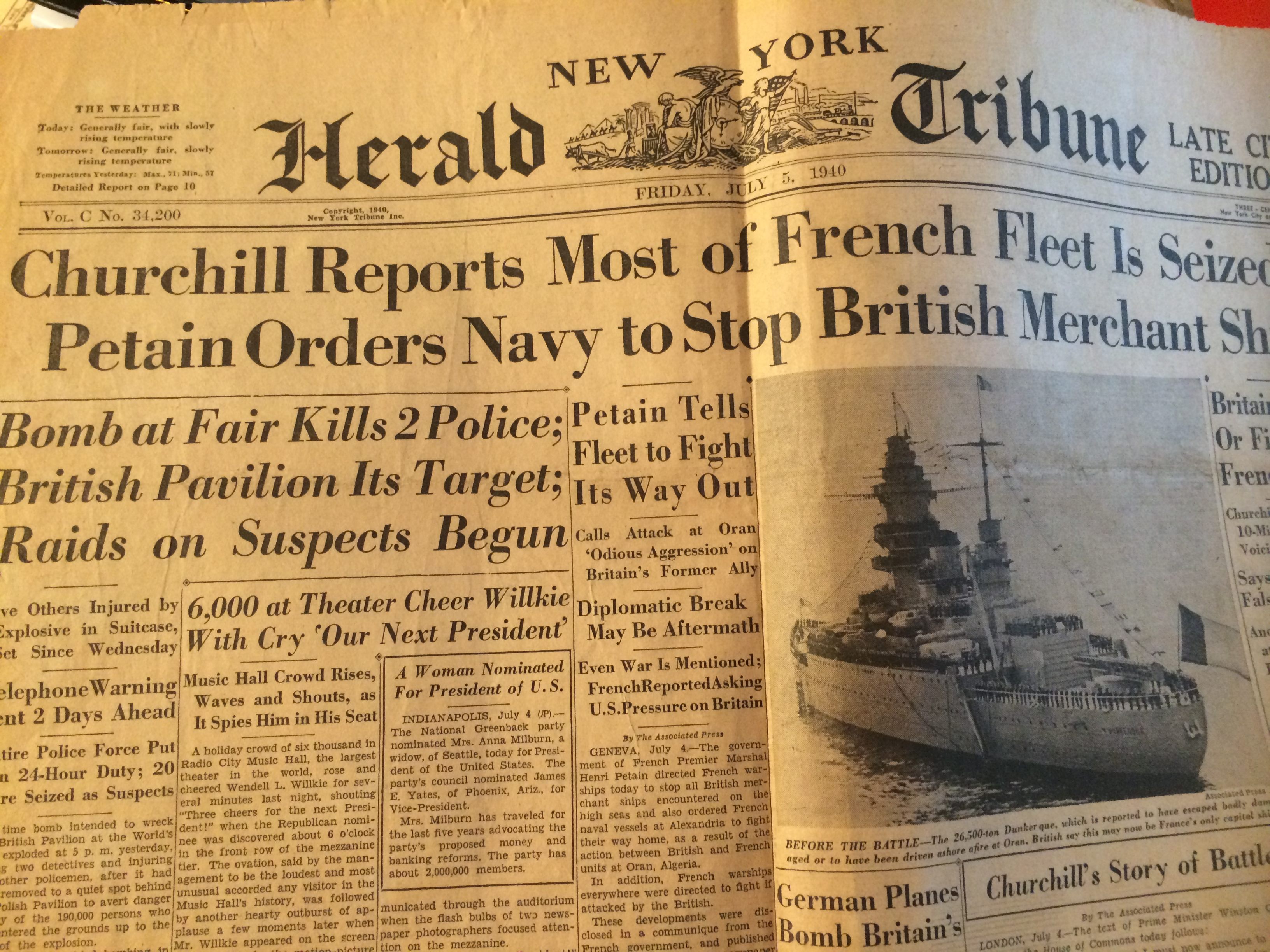
The front page of the New York Herald Tribune the day after the bombing. (Courtesy of Easter Miles)
A devastating bomb at the World’s Fair and a large body count could have possibly have swayed public opinion in the way the sinking of the Lusitania did in World War I.
The case of the exploding bomb at the World’s Fair was all but forgotten as news reports filtered in about Nazi aggression and atrocities in Europe. But it remained painfully real for the families Socha and Lynch left behind. Detective Socha and his wife had no children, and she eventually remarried, even though it meant losing her NYPD’s widow’s pension.
Meanwhile, Detective Lynch’s young wife, Easter, was left with five children to support but never remarried. The detective’s wake was held in the Bronx family home, and over 5,000 people came to pay their respects, including Babe Ruth, who signed the book of remembrance.
Lynch’s eldest daughter, who shares her mother’s name, was just 10 at the time. Today, aged 85, she has worked tirelessly from her home in Orange, Connecticut to keep the memory of her father’s bravery alive.
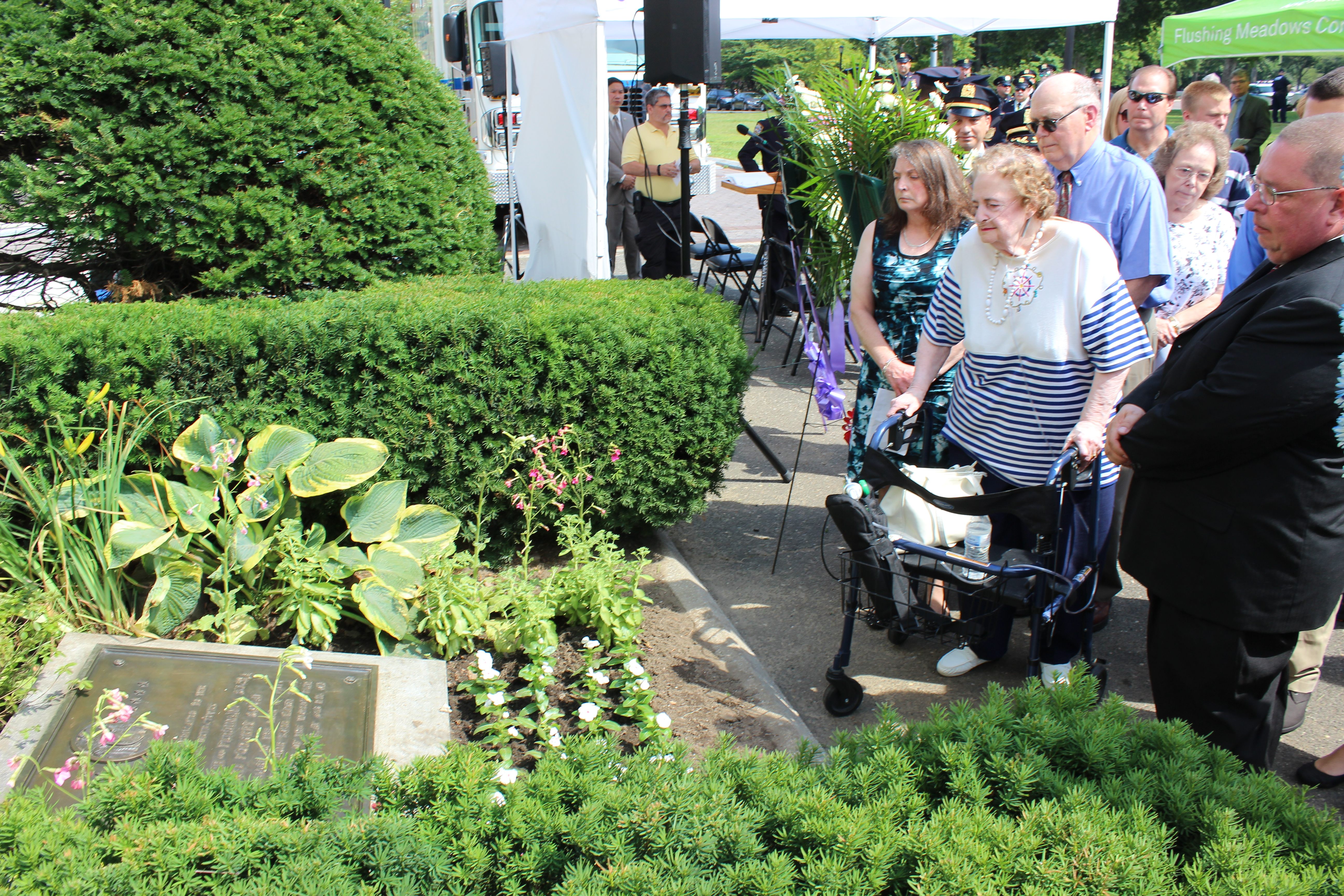
Easter Miles, daughter of Detective Lynch, at the plaque. (Photo: Luke Spencer)
“I grew up overnight,” Easter Lynch (now Easter Miles) says. “When I found out, I said, ‘Who’s going to take care of my mother?’”
At 12, Easter started working in a bakery. By the age of 17 she was working in finance and studying business at Fordham’s evening school to help support the family. “My mother was a heroine,” Easter says. “She didn’t take welfare, and four out of the five children went to college, each one sharper than the next.”
The bomb squad did their best to help, too. “The squad was very close-knit. Before my father and Socha died, there had only been six of them in it,” Easter says. “They pitched in and became our surrogate fathers. They took us to the circus and to ball games. They were there at Thanksgiving and Christmas.”
But little support came from either the World’s Fair Corporation or the British government. Lord Halifax, who became the U.K.’s ambassador to the U.S. in 1940, sent the Lynch family an engraved silver dish on behalf of the British government, “in recognition of the gallantry of her husband Detective Joseph Lynch.”

The silver dish presented to Easter Lynch from Lord Halifax representing the British Government. (Courtesy of Easter Miles)
Easter recalls her mother sending a telegram to the King and Queen of England, saying: “Thank you for your dish. If I had a house where I could use this for calling cards, it would be greatly appreciated. A basket of fruit to feed my children would be much better.”
Throughout the years, Easter has steadfastly collected an archive of newspaper clippings and reports of the case and the heroic sacrifices made by her father, Socha and the other severely injured officers.
During the 1964-65 World’s Fair, which took place at the same site in Flushing Meadows Park, a plaque for the bombing victims of 1939 was commemorated. Years later, the plaque had fallen into disrepair, and resembled little more than a manhole cover. Easter Miles led the petition to have it restored to where it lies today, outside the Queens Museum, the sole building left over from the 1939-40 World’s Fair.
Today the plaque, which lies largely unnoticed in a flowerbed by the Queens Museum’s left wall, is one of the few markers of this early terrorist attack on American soil.
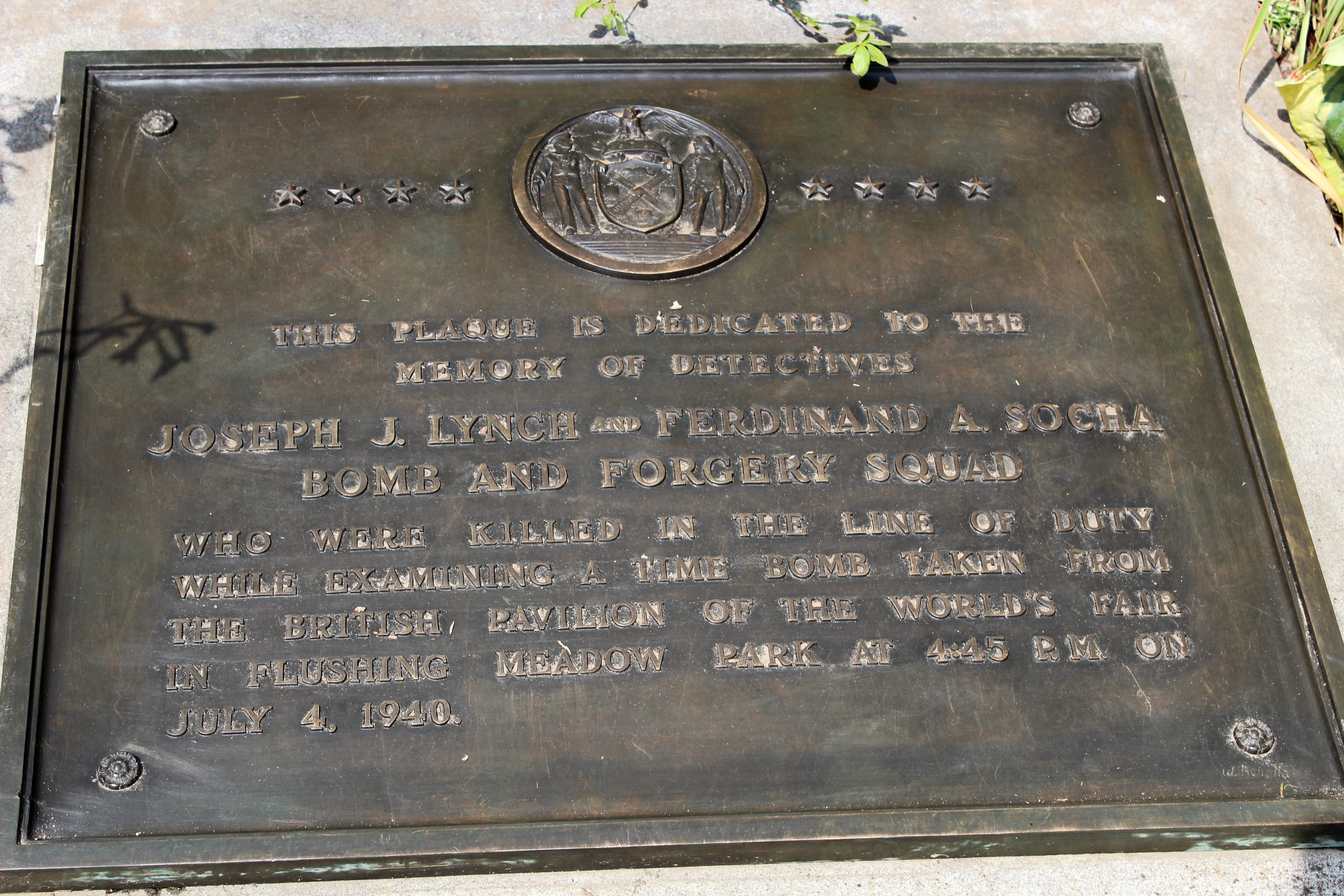
The plaque outside the Queens Museum commemorating the World’s Fair bombing of July 4th 1940. (Photo: Luke Spencer)
The memorial reads:
This plaque is dedicated to the memory of detectives
Joseph J. Lynch and Ferdinand A. Socha
Bomb and Forgery Squad
Who were killed in the line of duty while examining a time bomb taken from the British Pavilion of the World’s Fair in Flushing Meadow Park at 4:45pm on July 4th, 1940.
On the recent 75th anniversary of the bombing, a memorial service was held at the site of the plaque. While the murderers of Socha and Lynch have never been caught, the terrorist attack of 1940 did lead to almost immediate improvements in equipment and safety protocols for the Bomb Squad, including the invention of the LaGuardia Pyke bomb carrier truck, which would carry explosive devices away in greater safety.
The case of the exploding bomb at the World’s Fair remains one of the New York Police Department’s most poignant open files.
The $26,000 reward is still there.



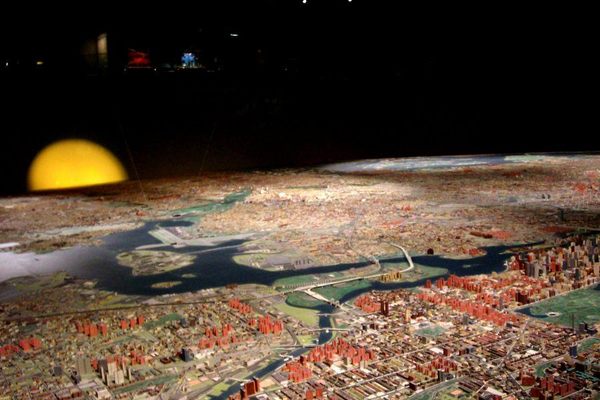




Follow us on Twitter to get the latest on the world's hidden wonders.
Like us on Facebook to get the latest on the world's hidden wonders.
Follow us on Twitter Like us on Facebook